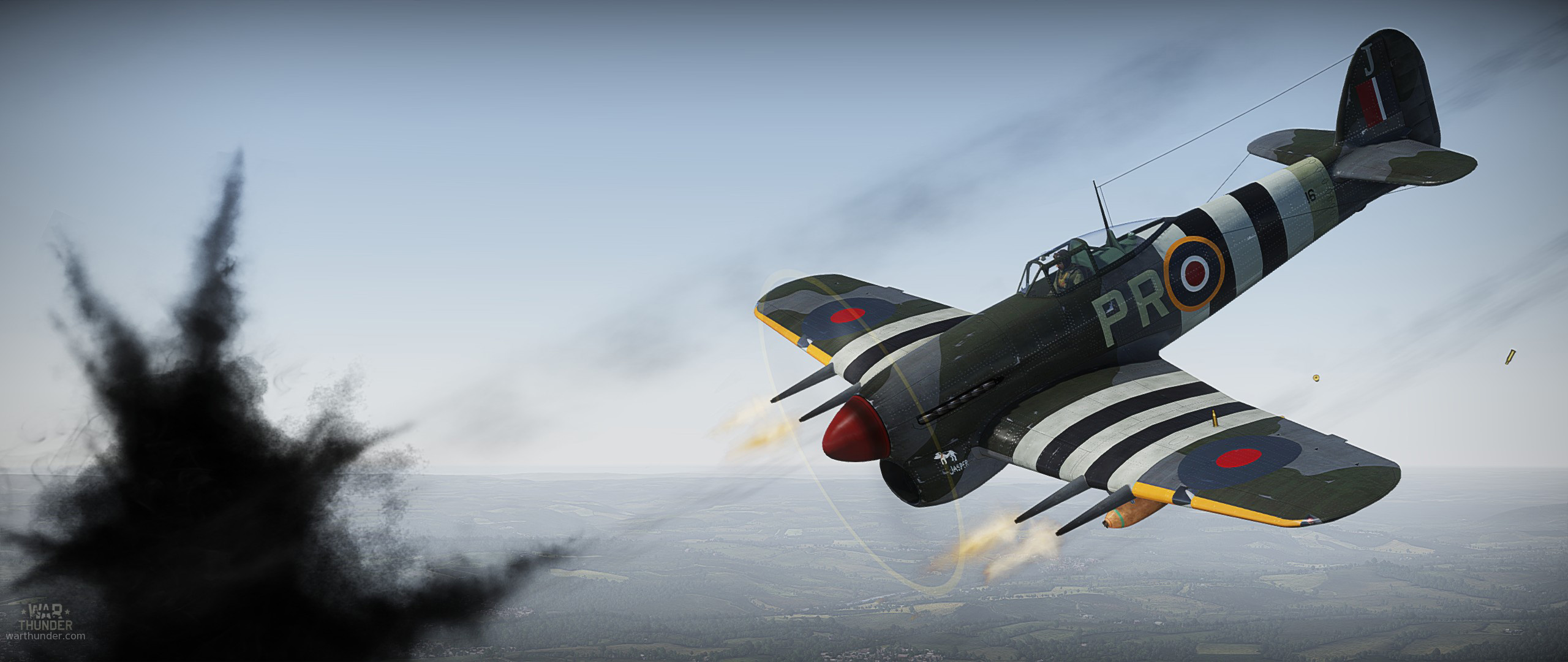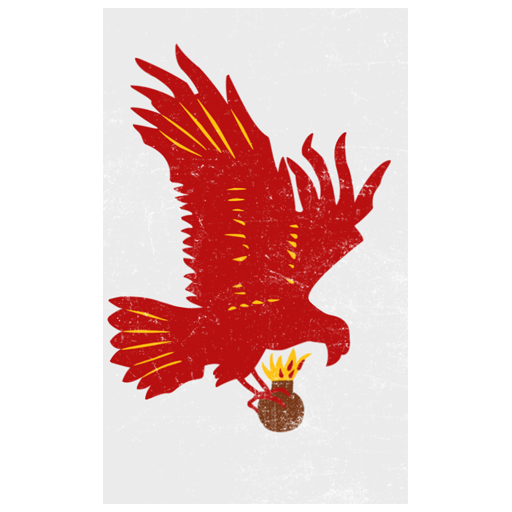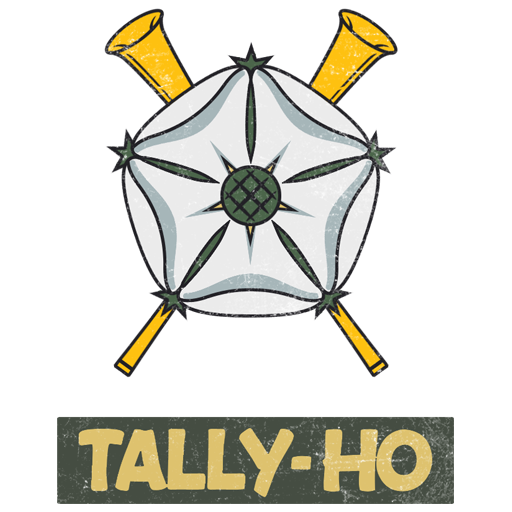
- For PC
- For MAC
- For Linux
- OS: Windows 10 (64 bit)
- Processor: Dual-Core 2.2 GHz
- Memory: 4GB
- Video Card: DirectX 11 level video card: AMD Radeon 77XX / NVIDIA GeForce GTX 660. The minimum supported resolution for the game is 720p.
- Network: Broadband Internet connection
- Hard Drive: 23.1 GB (Minimal client)
- OS: Windows 10/11 (64 bit)
- Processor: Intel Core i5 or Ryzen 5 3600 and better
- Memory: 16 GB and more
- Video Card: DirectX 11 level video card or higher and drivers: Nvidia GeForce 1060 and higher, Radeon RX 570 and higher
- Network: Broadband Internet connection
- Hard Drive: 75.9 GB (Full client)
- OS: Mac OS Big Sur 11.0 or newer
- Processor: Core i5, minimum 2.2GHz (Intel Xeon is not supported)
- Memory: 6 GB
- Video Card: Intel Iris Pro 5200 (Mac), or analog from AMD/Nvidia for Mac. Minimum supported resolution for the game is 720p with Metal support.
- Network: Broadband Internet connection
- Hard Drive: 22.1 GB (Minimal client)
- OS: Mac OS Big Sur 11.0 or newer
- Processor: Core i7 (Intel Xeon is not supported)
- Memory: 8 GB
- Video Card: Radeon Vega II or higher with Metal support.
- Network: Broadband Internet connection
- Hard Drive: 62.2 GB (Full client)
- OS: Most modern 64bit Linux distributions
- Processor: Dual-Core 2.4 GHz
- Memory: 4 GB
- Video Card: NVIDIA 660 with latest proprietary drivers (not older than 6 months) / similar AMD with latest proprietary drivers (not older than 6 months; the minimum supported resolution for the game is 720p) with Vulkan support.
- Network: Broadband Internet connection
- Hard Drive: 22.1 GB (Minimal client)
- OS: Ubuntu 20.04 64bit
- Processor: Intel Core i7
- Memory: 16 GB
- Video Card: NVIDIA 1060 with latest proprietary drivers (not older than 6 months) / similar AMD (Radeon RX 570) with latest proprietary drivers (not older than 6 months) with Vulkan support.
- Network: Broadband Internet connection
- Hard Drive: 62.2 GB (Full client)
Hawker Typhoon Mk. 1b, 609 Squadron, RAF Torney Island, 6 June 1944.
camouflage by Kabanovich | download here
During the prototyping process in 1938 and indeed well into the service life of the Hawker Typhoon, an inordinate amount of dangerous and indeed downright lethal flaws arose, including engine fires, carbon monoxide poisoning and, in severe cases, the rear segment of the fuselage coming free.
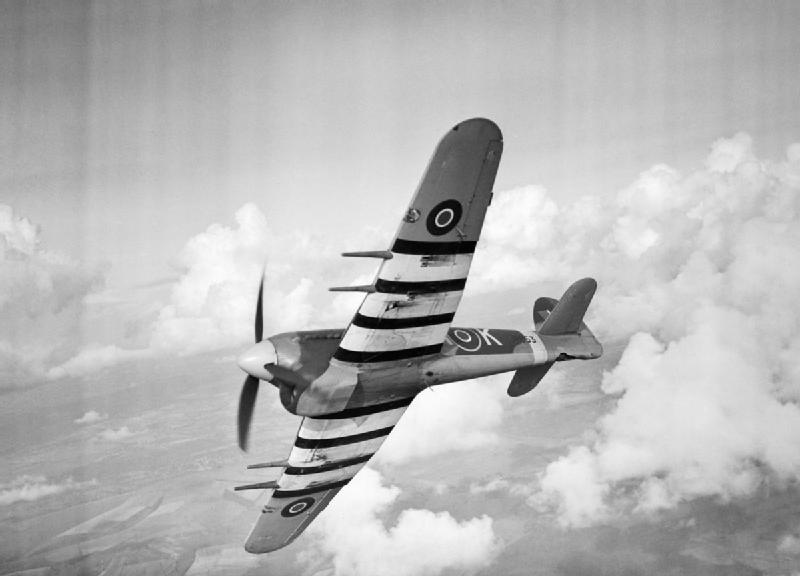 |
| A Hawker Typhoon Mk IB of No. 486 Squadron RAF in flight, in 1943 |
Sidney Camm, the lead designer of the project, pressed on however, and by 1943, with the help of many brave pilots, managed to eliminate, or at least mitigate, many of this aircraft’s worst excesses. One of the chief troublemakers of the early days was the Napier Sabre engine, which often unnerved new pilots with the decibels it gave off alone, being a full five times louder than the Merlin. The chin radiator - arguably the aircraft’s most distinctive external feature - was also a by-product of this powerplant, which, troublesome or not, generated an enormous amount of power. Coupled with the (usually) four bladed de Haviland or Rotol propeller, which had a diameter of 13 feet or almost four metres, it was capable of pulling the Typhoon through the air at speeds in excess of 400 mph or 643 kph.
This ensured its survival, as although it didn’t perform well as a high altitude fighter, at medium and low altitudes it was the only British fighter capable of chasing and catching the German fighter-bombers which had been plaguing the South Coast of England and, unless they were caught red handed, getting away with it. Now, suddenly on their way home they would find themselves being closed in upon by a beast of a machine which was fully capable of knocking them out of the air now the 12 7.6mm machine guns of the 1a had been replaced with four rather more useful 20mm Hispano cannons.
The second role it excelled in, much like its predecessor the Hawker Hurricane, was as a ground attack aircraft. The thick strong wing was ideal for carrying a mixture of ordnance and the 20mm cannon could also make short work of unarmoured ground targets. It could carry up to eight rockets with 60lb or 27 kilo warheads, or eight of the lighter 25lb or 11 kilo armour piercing rockets. Alternatively it could carry a pair of 500lb or 226 kilo bombs, with later versions doubling that.
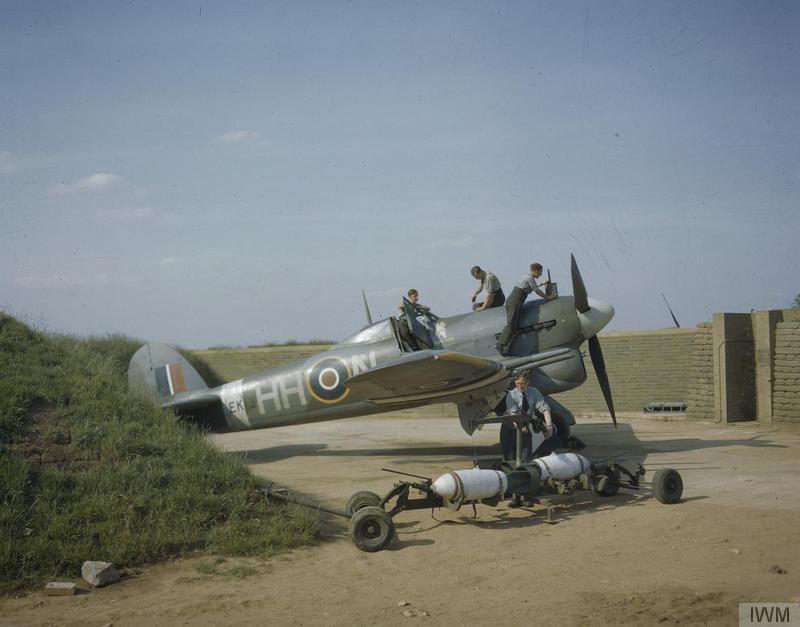 |
| Hawker Typhoon Mark IB (s/n EK139, "HH-N") "Dirty Dora", of No 175 Squadron, Royal Air Force, undergoing servicing in a blast-walled dispersal point at Colerne |
In this capacity the Typhoon turned the tables on the Germans and by 1943 was disrupting supply lines and destroying targets of opportunity throughout Northern France. In August 1944, during the Battle of the Falaise Pocket – widely acknowledged as the decisive engagement of the Battle of Normandy, the Typhoons of the 2nd Tactical Air Force managed to knock out 175 enemy tanks in a single day.
In the game we have two three Typhoons, the 1a, the premium 1b and 1b/l. The following specifications are for the latter.
The Typhoon 1b/l is a Tier 3 aircraft with a battle rating of 4.7. It has a maximum speed of 410 mph or 661 kmh, a maximum altitude of 37,000 feet or 11,500 km and a turn time of 19.4 seconds. It’s armed with four 20mm Mk.II Hispano cannon with 550 rounds of ammunition and a reload time of 40 seconds. It can also carry 8 76mm RP-3 rockets and has a bombload of 1000lbs or 453 kilos.
The 1b/l is far and away my favourite Typhoon in the game, and in fact one of my favourite British aircraft in the game. And although it carries an impressive amount of ordnance, if I take any out with me I tend to drop it at the first target of opportunity and use it as a straight fighter.
It’s fast enough to get in and out of trouble on its own terms, and although turn fighting is possible, whatever you manage to line up in its sights is almost guaranteed to disintegrate when caught by the Mk.II Hispanos.
Author: Digital Digging
In one of the upcoming updates, we will introduce:
the Emblem of No. 609 Squadron RAF and Emblem of No. 193 Squadron RAF:
Decals made by Jej 'CharlieFoxtrot' Ortiz and Colin 'Fenris' Muir
